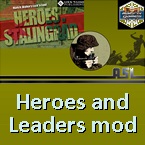Flame-throwing tanks formed around 12% of the series production of T-26 light tanks. It should be mentioned that the abbreviation "OT" (Ognemetniy Tank which stands for Flame-throwing Tank) appeared only in post-war literature; these tanks were originally called "KhT" (Khimicheskiy Tank which stands for Chemical Tank), or BKhM (Boevaya Khimicheskaya Mashina; Fighting Chemical Vehicle) in the documents of the 1930s. All chemical (flame-throwing) tanks based on the T-26 chassis (KhT-26, KhT-130, KhT-133) were designated BKhM-3. The vehicles were intended for area chemical contamination, smoke screens and for flame-throwing.
The TKhP-3 chemical equipment for smoke screens and chemical contamination was developed in 1932. This equipment could be easily installed on any T-26 light tank and was produced by the "Compressor" Factory, (introduced for smoke screening as the TDP-3 from summer 1934; 1,503 such sets were produced to the end of 1936).
The KhT-26 (OT-26) — Flamethrower was a variant of the T-26 developed in 1933. The port turret was completely removed and the starboard turret was equipped with a flamethrower and a coaxial 7.62mm machine gun, both operated by a 2-man crew. The effective range of the flamethrower was only 35 meters. It was approved for production under the designation ChT-26 (Chemical Tank) but was also called BChM-3. In total, 615 vehicles of this type were produced in 1933-34, before production was halted in favor of the OT-130 and OT-133.
The KhT-130 (OT-130) — Flamethrower was a variant of model 1933, using a larger 45 mm gun turret (a gun was replaced with a flamethrower). The KhT-133 (OT-133) — Flamethrower was a variant of model 1939 (a gun was replaced with a flamethrower). These were used in special battalions which contained 45 FT tanks each, plus a few T-26 and armored cars.
In comparison to man-portable flamethrowers, flame tanks carried much more fuel, and could fire longer-ranged bursts. Due to their ability to get in range of enemy positions in comparative safety, they were invaluable for rooting out heavy infantry fortifications.
The maximum range of a flamethrower was typically less than 150 meters. Because of this limitation, the flamethrower was virtually useless on an open battlefield. However, they proved a potent psychological weapon against fortified troops. In many instances, troops surrendered or fled upon seeing a flame tank fire ranging shots, rather than risk being burned alive.
Crews of 'flame' tanks were not necessarily more vulnerable than those crews in the regular, standard version of the tank, but the crews of flame-throwing tanks were often treated differently should they be captured alive by enemy troops. Due to the perceived inhumanity of the weapon itself, captured crews of such tanks were often treated much less humanely than crews of regular tanks. Instances of 'flame-tankers' being executed by the opposite troops upon capture were not uncommon. Flame tanks also suffered from the fact, along with flamethrower-armed troops, that all enemy within range would usually open up on them due to the fear of the weapon.





















